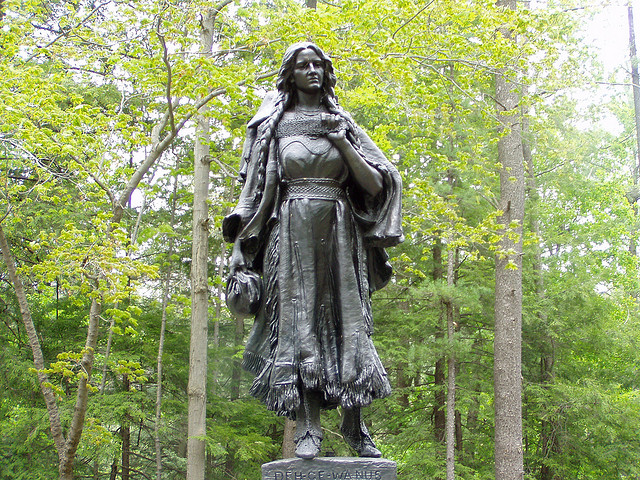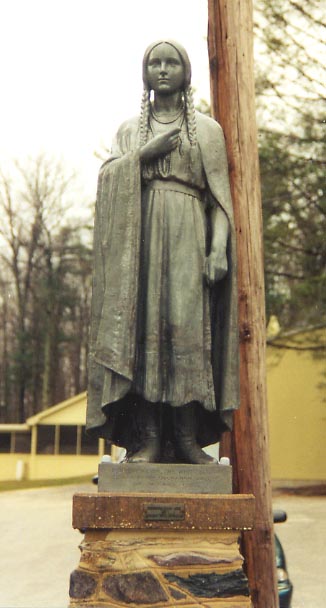Captivity Narrative: Mary Jemison
The Statue of Mary Jemison, by H.K. Bush-Brown, in Letchworth State Park in Castile, N.Y. marks the final resting place of Mary Jemsion. The granite marker was erected in the 1880s and the statue was dedicated in 1910. A second statue of Mary Jemison, erected by Catholic priest Father Will Whalen in 1923, is located at St. Ignatius Loyola Church in Orrtanna, Pa. and honors the nearby location of her capture. Below is an excerpt from her narrative as she and her captors approached Fort Duquesne:
Having spent three nights and two days at that place, and the storm having ceased, early in the morning the whole company, consisting of twelve Indians, four Frenchmen, the young man, the little boy and myself, moved on at a moderate pace without an Indian behind us to deceive our pursuers.
In the afternoon we came in sight of Fort Pitt (as it is now called,) where we were halted while the Indians performed some customs upon their prisoners which they deemed necessary. That fort was then occupied by the French and Indians, and was called Fort DuQuesne. It stood at the junction fo the Monongahela, which is said to signify, in some of the Indian languages, the Falling-in-Banks, and the Alleghany rivers, where the Ohio river begins to take its name. The word O-hi-o, signifies bloody.
At the place where we halted, the Indians combed the hair of the young man, the boy and myself, and then painted our faces and hair red, in the finest Indian style. We were then conducted into the fort, where we received a little bread, and were then shut up and left to tarry along through the night.


The full version of Mary Jemison’s captivity narrative can be found here.
You can also learn more about Mary Jemison in “Women’s Indian Captivity Narratives,” edited by Kathryn Derounian-Stodola.